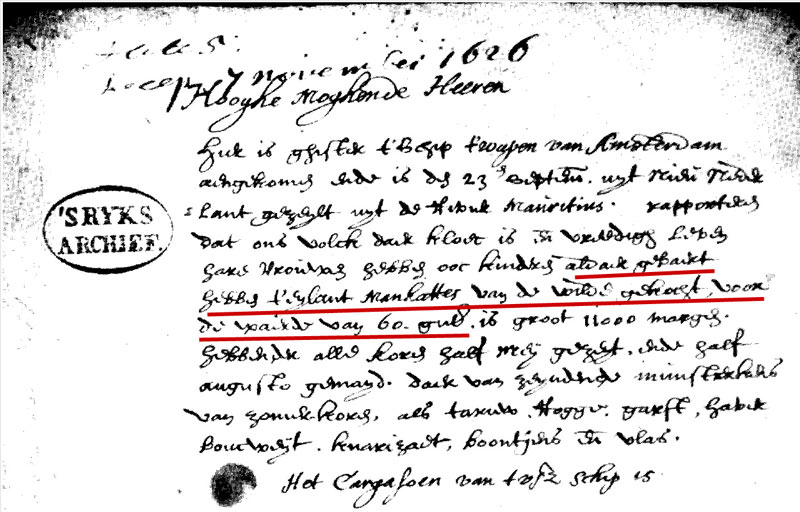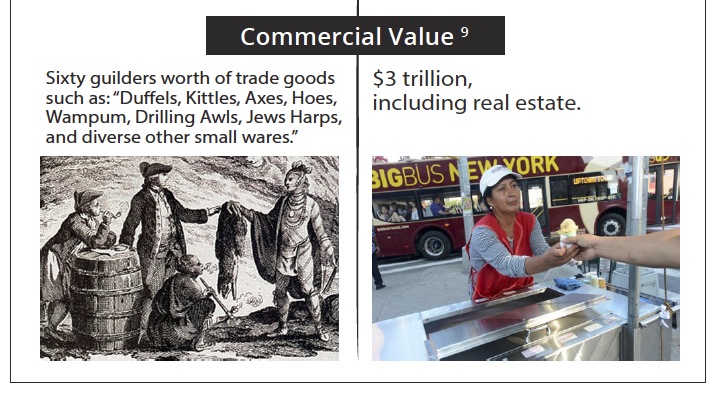
The longest day of the year—the summer solstice in the Northern Hemisphere—is special to me beyond its symbolic, naturalistic, and astronomical significance. On top of this being the first major calendar point since publishing my full-length, 579-page historical fiction novel in its omnibus edition, the characters in New York 1609 place enormous value on this day for good reasons. The Turning of the Days is a time of change. The strawberries are ready for picking. Trading and raiding are in full swing. And the days now start their steady march toward fall and then winter. Time starts to compress from this day forward.
But there’s more. This is the day in my narrative that I attach to the Dutch “purchasing” the island of Manhattan from the Lenape Indians in 1626. This is the birthday of one of the biggest legends in history. Some call it the greatest con of them all. The ultimate real estate hustle. An entire island, now valued at $3 trillion, originally traded for “$24 worth of beads, buttons, and trinkets.” Right?
Well, not so fast. If you look at it from both sides, it wasn’t so much a swindle but more probably a draw. Each side thought they were getting the better end of the deal. The Natives received valuable trade goods and tools, relief from compensations and debts owed the Dutch, and a defensive alliance against their other enemies. The Dutch were getting a strategic and perfectly positioned patch of land for mere “trifles.”

While the date of the actual acquisition of Manhattan in 1626 is imprecise (author Russell Shorto believes it was early summer; the authors of the respected history tome Gotham say it occurred in May or June), I picked the solstice (June 21 was a Sunday that year) because of its importance to everyone involved. The Europeans (mostly Dutch) were well aware of its meaning, and to the native Lenape, it was one of the most consequential days of the annual cycle of life. A good time for such a momentous event.
Here’s a partial excerpt from my book describing the scene (from the point of view of Marie, one of the early settlers)…
Finally, it was time for the signing.
Director-General Minuit stepped to the barrel with the vellum contract, a goose quill, and a bottle of black ink. Standing over the barrel, he looked over the crowd, nodding for effect, then signed his name with a flourish at the bottom of the agreement. He left the vellum and writing implements on the barrel and stepped away, allowing Lampo his turn.
Once all from their side had signed, it went to the natives. Dancing Fish shook his head and waved up High Limb, who awkwardly signed with an X in a huge scrawl. Then followed Willow’s aunt and the two other Sachems, who were even more clumsy in signing their X’s.
At last, it was Dancing Fish’s turn. He walked up behind the barrel, looked down at the contract, then hesitated, seeming unsure. He lifted his amber eyes to look directly at Marie.
She smiled at him and waited for his smile in return. But none came. Only a vacant look, on a face empty of emotion.
Then he dipped the quill, scribbled something, and quickly sat back down.
It was done. They had bought the island of Mannahatta.
There is no surviving deed or bill of sale, so all we have to go on is a letter by Peter Schagen, representative of the West India Company, who greeted a ship from New Netherland in Amsterdam in late 1626. Here below is the complete letter, which is the first reference to this legendary sale after the fact:

The cargo list reads (translated):
7246 Beaver skins
178½ Otter skins
675 Otter skins
48 Mink skins
36 Lynx skins
33 Minks
34 Muskrat skins
Many oak timbers and nut wood.
All of these were highly valued trade goods.
So, in honor of this important date from 392 years ago, I’m offering my own small deal: the ebook edition of New York 1609 is FREE for the next three days. Obviously not on the same scale as buying an island (!), but its my digital equivalent. Just click on the orange link and you’ll be taken to Amazon.com (and potentially to any of the other 13 Amazon stores worldwide) to claim it.
If you don’t already have a copy, now’s your chance to pick it up for even less than a handful of beads, buttons, and trinkets. If you have the book, return to Chapter 60 and immerse yourself again in the time of Minuit, the natives of the Manahate band, and all the players—real and imagined—who altered the history of one of the greatest cities on earth on the day of the summer solstice in 1626.


Such a deal, both a great read FOR FREE and that great island for not much more ( than free). Just wish I would have bought a brownstone or two on 121 st in Harlem back in the bad old 1970s, when Harlem was considered really scary. We’d be sitting on a big pile of wampum now!
And to think, this (NYC 1609+) is where–and when– dealmaking in the U.S. started. The original art of the deal.
Thanks for stopping by, Gerry.